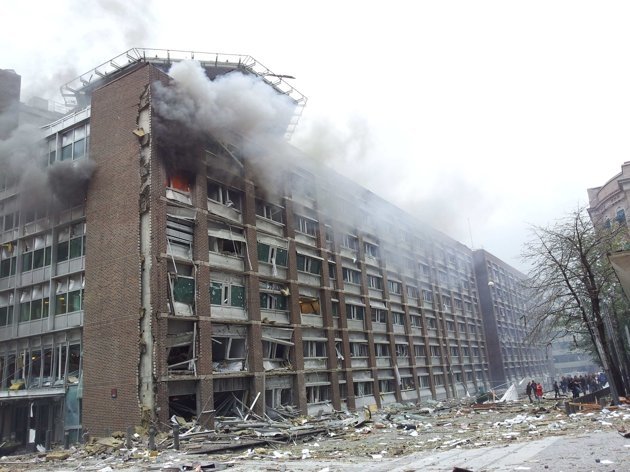“An absolute nightmare,” is how one Labour Party official described the political situation in June 2009. In the weeks leading up to the European Parliamentary elections in the United Kingdom that June 4, internal polling indicated that the white nationalist British National Party (BNP) could benefit from a confluence of political events.
Deep concern about the economic crisis, combined with growing distrust of the Labour-led government, and multiple scandals involving members of parliament (MPs from several different parties) kept dominating the front-pages in the weeks leading up to the election. MPs had charged lavish home repairs, construction of moats around their mansions, and other luxuries to their government expense accounts. One of the bi-products of this growing dissatisfaction was that an exceptionally low turnout was expected. These factors could potentially aid the BNP.
Though the BNP had never before been able to win a seat in the European Parliament, the situation was so bad that polls showed that the BNP were on course to pick up six to seven–with as many as a dozen seats in the European Parliament a distinct possibility.
In the weeks before the election, I had the opportunity to get an exclusive, behind-the-scenes look at the groundbreaking campaign to stop the BNP from gaining an electoral foothold. It may not be a tale of Arthurian proportions, but this epic quest by a band of merry men and women to battle back Nick Griffin and his BNP thugs is one that needs to be told.
After an overnight flight from Seattle, I landed at Heathrow then quickly caught a train up to Manchester to catch up with the classic 1964 Leyland Routemaster red double-decker bus, the center of the HOPE Not Hate Tour’s tour. We visited many of the key areas where the BNP were threatening to make inroads, including Oldham, Stoke on Trent, Burnley, and Manchester.
The invitation for this unique opportunity came in October 2008, when I was helping coordinate a trip by Searchlight, the British anti-fascist monthly, and a group of trade unionists, anti-racism activists, and religious leaders, to the United States to learn from organizing efforts amidst an historic election campaign. We met with trade unionists in Pennsylvania, immigrant rights organizers in Maryland, community organizers in Virginia, and many different leaders in Washington. Among the important meetings in DC was with the techies at Blue State Digital, one of the key firms behind the success of the Obama campaign social networking website.
The Hope Not Hate campaign was started by Searchlight magazine to conduct community campaigns against the growing strength of the British National Party. For more than thirty years, Searchlight has primarily been focused on anti-fascist research and the publication of a monthly magazine. New times, however, call for new methods.
This time around, the HOPE not Hate campaign delivered 3.4 million newspapers and leaflets across the country in the two months leading up to the election. In the North West region alone, 1.6 million HOPE not Hate newspapers and leaflets were put out by approximately 1,200 supporters, an effort which far surpassed any of the political parties. In Yorkshire, 880,000 leaflets were distributed, including 200,000 aimed at the large Muslim population in West and South Yorkshire. Across the Midlands 300,000 newspapers and leaflets were put out. Even in London, which was never a key priority, about 300,000 pieces of literature were distributed, including 50,000 newspapers in Hackney and a similar number of leaflets in Barking and Dagenham. In Manchester, I witnessed 140 people come together to hand out 28,000 leaflets in the city centre. There were teams at the train stations, tram stops and dotted around the shopping areas.
Another success of the campaign was press work. Throughout the campaign, Searchlight editors and the rest of their team worked with the media to inform the public about the real face behind the BNP’s lies and racism.
HOPE not Hate enhanced their online outreach. On the eve of the election, emails were sent out to almost 600,000 addresses, making it the largest single political email in British domestic political history.
When the election results were announced on June 9, the BNP came away with their first ever seats in the European Parliament. Two BNP candidates, including leader Nick Griffin, squeaked into seats. Given the dreadful results for Labour, the results could have been far worse. The HOPE not Hate campaign prevented many other BNP candidates from getting elected, and dramatically altered the British political landscape. HOPE not hate organizer Nick Lowles made it clear that the work of 2009 was only just the beginning, and that the campaign would be there to challenge the BNP at every turn.

Hope Not Hate Campaign Bus

Hope Not Hate Campaign Bus

BNP Billboard

A Beautiful Day for Leafleting in Manchester

Hope Not Hate Leafleting

Hope Not Hate Supporters

Hope Not Hate Leafleting



